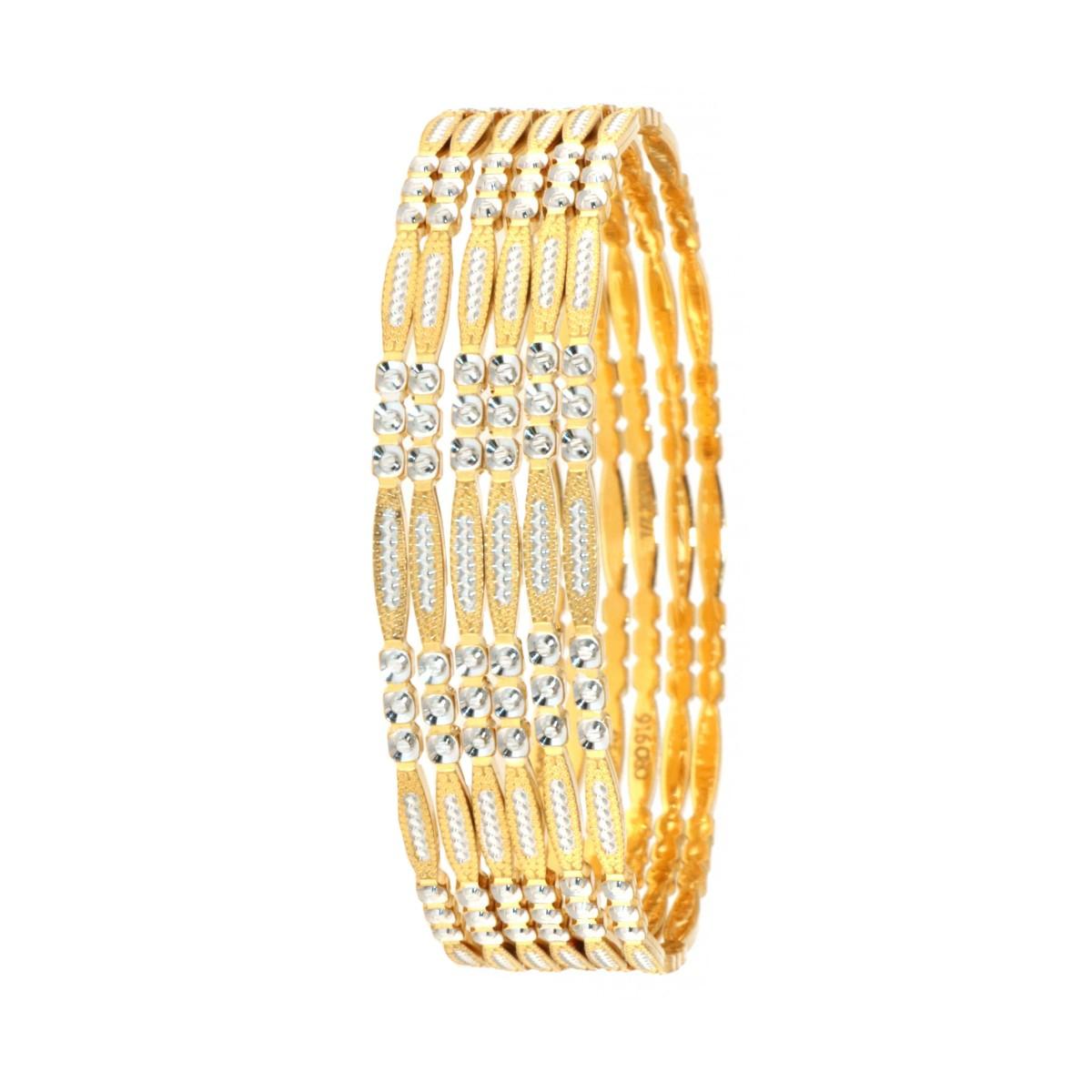Indian jewelry is renowned for its rich history, intricate craftsmanship, and symbolic significance, with gold bangles standing out as one of the most cherished adornments. The Indian gold design of bangles reflects the country’s diverse culture, traditions, and artistic heritage, making these pieces not only beautiful but also deeply meaningful.
The Cultural Significance of Indian Gold Bangles
In Indian culture, bangles are more than just jewelry; they are symbols of prosperity, health, and marital bliss. Traditionally, they are worn by women on special occasions like weddings, festivals, and religious ceremonies. In many parts of India, bangles are a symbol of marital status, with different regions having their own unique styles and traditions associated with wearing them.
Gold bangles, in particular, are highly valued not only for their aesthetic appeal but also for their investment value. They are often passed down through generations, becoming treasured family heirlooms that carry stories and memories.
Diverse Styles of Indian Gold Bangles
The Indian gold design of bangles varies widely, reflecting the vast cultural diversity of the country. From the ornate styles of the North to the intricate designs of the South, each region offers its own unique interpretation of this timeless accessory. Here are some of the most popular styles:
-
Kada Bangles: Originating from North India, Kada bangles are thick, sturdy, and often feature intricate designs like floral patterns, deities, or peacocks. These bangles are usually worn in pairs and are a staple in bridal jewelry.
-
Chudi Bangles: Commonly worn in the Western and Northern Indian gold bangles parts of India, Chudi bangles are slender and usually worn in multiples. They can be simple gold bands or decorated with enamel work and gemstones.
-
Filigree Bangles: This design is popular in the eastern states like West Bengal and Odisha. Filigree bangles are known for their delicate, lace-like patterns created by twisting and curling thin gold wires. The craftsmanship involved in making filigree bangles is highly intricate, resulting in lightweight yet stunningly detailed pieces.
-
Temple Jewelry Bangles: Inspired by the grandeur of South Indian temples, these bangles feature motifs of gods, goddesses, and temple architecture. They are often embellished with rubies, emeralds, and other precious stones, making them ideal for traditional ceremonies.
-
Meenakari Bangles: Hailing from Rajasthan, Meenakari bangles are colorful and vibrant, thanks to the enamel work that decorates the gold. These bangles are perfect for those who love a splash of color in their jewelry.
-
Antique Gold Bangles: Antique designs are favored by those who appreciate vintage aesthetics. These bangles often feature oxidized gold with intricate patterns, giving them a timeless appeal that complements both traditional and contemporary outfits.
Modern Interpretations of Traditional Designs
While traditional designs remain popular, contemporary jewelers are experimenting with new styles to cater to modern tastes. Today, the Indian gold design of bangles includes minimalist styles that appeal to younger generations, as well as fusion designs that blend traditional motifs with modern elements.
-
Minimalist Bangles: These bangles are sleek, simple, and perfect for everyday wear. They often feature clean lines, geometric patterns, or subtle embellishments, making them versatile pieces that can be worn with both casual and formal outfits.
-
Cuff Bangles: Cuff bangles are open-ended, allowing for a more adjustable fit. They can be intricately designed with carvings or kept simple for a chic, contemporary look.
-
Personalized Bangles: Customization is a growing trend, with many opting for personalized bangles that feature engraved names, initials, or meaningful symbols. This adds a unique touch to the traditional design, making the piece more personal and special.
Choosing the Perfect Indian Gold Bangles
When selecting gold bangles, it’s important to consider the design, craftsmanship, and the occasion for which they will be worn. Whether you’re buying bangles for a wedding, a festival, or as an investment, here are a few tips:
-
Design and Style: Choose a design that resonates with your personal style or the occasion. Traditional designs are perfect for weddings and religious ceremonies, while minimalist or contemporary styles are ideal for everyday wear.
-
Purity and Weight: Indian gold bangles are typically made from 22-karat gold, which is highly valued for its purity and luster. The weight of the bangles can vary depending on the design, so consider whether you prefer something light and delicate or more substantial and ornate.
-
Craftsmanship: Pay attention to the craftsmanship of the bangles. Intricate designs require skilled artisans, and the quality of workmanship is crucial to the overall look and durability of the bangles.
-
Matching Sets: For a coordinated look, consider purchasing matching sets that include bangles, earrings, and a necklace. This is especially important for bridal jewelry, where a cohesive look is often desired.
Caring for Your Gold Bangles
To ensure that your gold bangles remain as beautiful as the day indian gold design of bangles you bought them, proper care is essential. Store them in a soft cloth or padded jewelry box to prevent scratches. Avoid exposing them to harsh chemicals or rough surfaces. Regular cleaning with a mild soap solution and a soft cloth will help maintain their shine and luster.
Conclusion
The Indian gold design of bangles is a testament to the country's rich cultural heritage and exquisite craftsmanship. Whether you prefer traditional, antique, or modern styles, Indian gold bangles offer a timeless elegance that can be treasured for generations. As you explore the wide array of designs available, you’ll find that each piece tells a story, making Indian gold bangles not just a piece of jewelry, but a meaningful expression of art, culture, and tradition.

